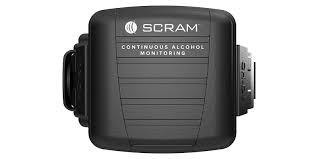Service
SCRAM System
SCRAM Continuous Alcohol Monitoring System
The SCRAM System, or SCRAM (Secure Continuous Remote Alcohol Monitor) Continuous Alcohol Monitoring system represents a significant technological advancement in the field of alcohol monitoring and community corrections. Designed to be worn on the ankle, this device offers an effective solution for monitoring alcohol consumption in real-time, providing courts and correctional facilities with a reliable tool for ensuring compliance with sobriety requirements. This webpage delves into the mechanics of the SCRAM system, its applications, potential issues like false positives, and its broader implications for domestic violence cases and community corrections.
How the SCRAM System Works
The SCRAM system is an ankle bracelet that continuously monitors the wearer’s alcohol consumption. The device functions by measuring the ethanol vapor that is excreted through the skin in the form of perspiration. This process, known as transdermal alcohol monitoring, involves the following steps:
Detection: The device detects ethanol molecules present in the wearer’s sweat.
Measurement: It measures the concentration of ethanol at regular intervals, typically every 30 minutes.
Data Transmission: The collected data is transmitted to a centralized monitoring station via a modem or wireless technology, where it is analyzed and stored.The device is tamper-resistant, designed to be difficult to remove or interfere with, ensuring that the data collected is accurate and reliable. The continuous nature of the monitoring means that any attempt to consume alcohol will be detected promptly, providing a comprehensive overview of the wearer’s sobriety over time.
Causes of False Positives
While the SCRAM system is highly effective, it is not without its potential for false positives. Several factors can contribute to erroneous readings:
Environmental Alcohol: Exposure to alcohol-containing products, such as hand sanitizers, perfumes, or cleaning agents, can sometimes be detected by the device. Although the system is designed to distinguish between different sources of alcohol, close or prolonged exposure can occasionally result in false readings.
Medical Conditions: Certain medical conditions that cause the body to produce ethanol internally, such as diabetes or specific metabolic disorders, can potentially trigger false positives.
Improper Use: Failure to follow usage guidelines, such as not properly maintaining the device or tampering attempts, can affect its accuracy.
To mitigate these risks, the monitoring data is often reviewed by trained professionals who can differentiate between genuine alcohol consumption and false positives based on patterns and additional evidence.
Court-Mandated Usage
Courts often order the use of the SCRAM system in various legal contexts, particularly for individuals with a history of alcohol-related offenses or those undergoing probation. Common reasons for court-mandated SCRAM usage include: DUI Offenses: Individuals convicted of driving under the influence (DUI) may be required to wear the SCRAM bracelet as part of their probation terms to ensure they remain sober.
Parole Conditions: Parolees with a history of alcohol abuse may be monitored to prevent relapse and ensure they adhere to the terms of their release.
Custody and Divorce Cases: In family law, especially in custody disputes, one parent may be required to wear a SCRAM device to demonstrate sobriety and create a safer environment for their children.
The SCRAM system provides courts with a reliable means to monitor compliance, helping to reduce the risk of reoffending and supporting the rehabilitative goals of the justice system.
GPS Integration
Some versions of the SCRAM device also include GPS tracking capabilities. This dual functionality serves several purposes:
Enhanced Monitoring: Combining alcohol monitoring with GPS tracking allows for comprehensive oversight of an individual’s movements and sobriety.
Geofencing: Courts can establish geographic boundaries, known as geofences, that the individual must avoid. Violations of these boundaries can trigger alerts to authorities.
Accountability: GPS data can corroborate the individual’s claims about their whereabouts and activities, adding an additional layer of accountability.
This integration of GPS technology is particularly useful in high-risk cases, such as domestic violence situations, where the monitored individual must avoid certain locations or people.
Applications in Domestic Violence and Community Corrections
The SCRAM system’s utility extends beyond traditional alcohol-related offenses, proving beneficial in the contexts of domestic violence and broader community corrections:
Domestic Violence: In cases of domestic violence, the SCRAM device can be used to monitor offenders who have been ordered to abstain from alcohol as a condition of their release or probation. Alcohol consumption is often a factor in domestic violence incidents, and monitoring sobriety can help reduce the likelihood of reoffending. The addition of GPS tracking ensures that the offender adheres to restraining orders and avoids prohibited areas.
Community Corrections: For individuals in community corrections programs, the SCRAM system provides a means to demonstrate compliance with sobriety requirements while integrating back into society. It supports rehabilitation by offering a structured monitoring framework, thus reducing the chances of recidivism.
Conclusion
The SCRAM system is a sophisticated tool that plays a crucial role in modern community corrections and judicial supervision. By continuously monitoring alcohol consumption through transdermal analysis and integrating GPS tracking, it offers a robust solution for ensuring compliance with sobriety conditions. Despite potential challenges like false positives, the system’s benefits in reducing reoffending rates and supporting rehabilitation are significant.
Courts and correctional facilities leverage SCRAM devices to enhance public safety, promote offender accountability, and aid in the rehabilitation process. As technology continues to evolve, the SCRAM system is likely to become even more integral to managing and monitoring individuals with alcohol-related offenses, domestic violence histories, and those in community correction programs.
Read more here.
Contact our Ellis County Criminal Lawyer firm today.


Time is of the essence…
If you were arrested for a DWI you only have 15 days to request a hearing for ALR – automatic license renewal. If you do not request a hearing in time or do not show up prepared, your license could be suspended.
Likewise other crimes have important factors that are time sensitive. It may be important to have you tested at a court approved lab for drugs or other substances because drugs will metabolize out of your system very quickly and there is only a small window of time left to test.
And for other crimes still it can be important to get witness testimonies or affidavits before the details start to blur or fade or before other parties obtain lawyers and stop talking.
Office Hours
Weekdays – 9:00 am to 6:00 pm

Divi attorney
Contact Info
Waxahachie TX 75165
(469) 547-7761